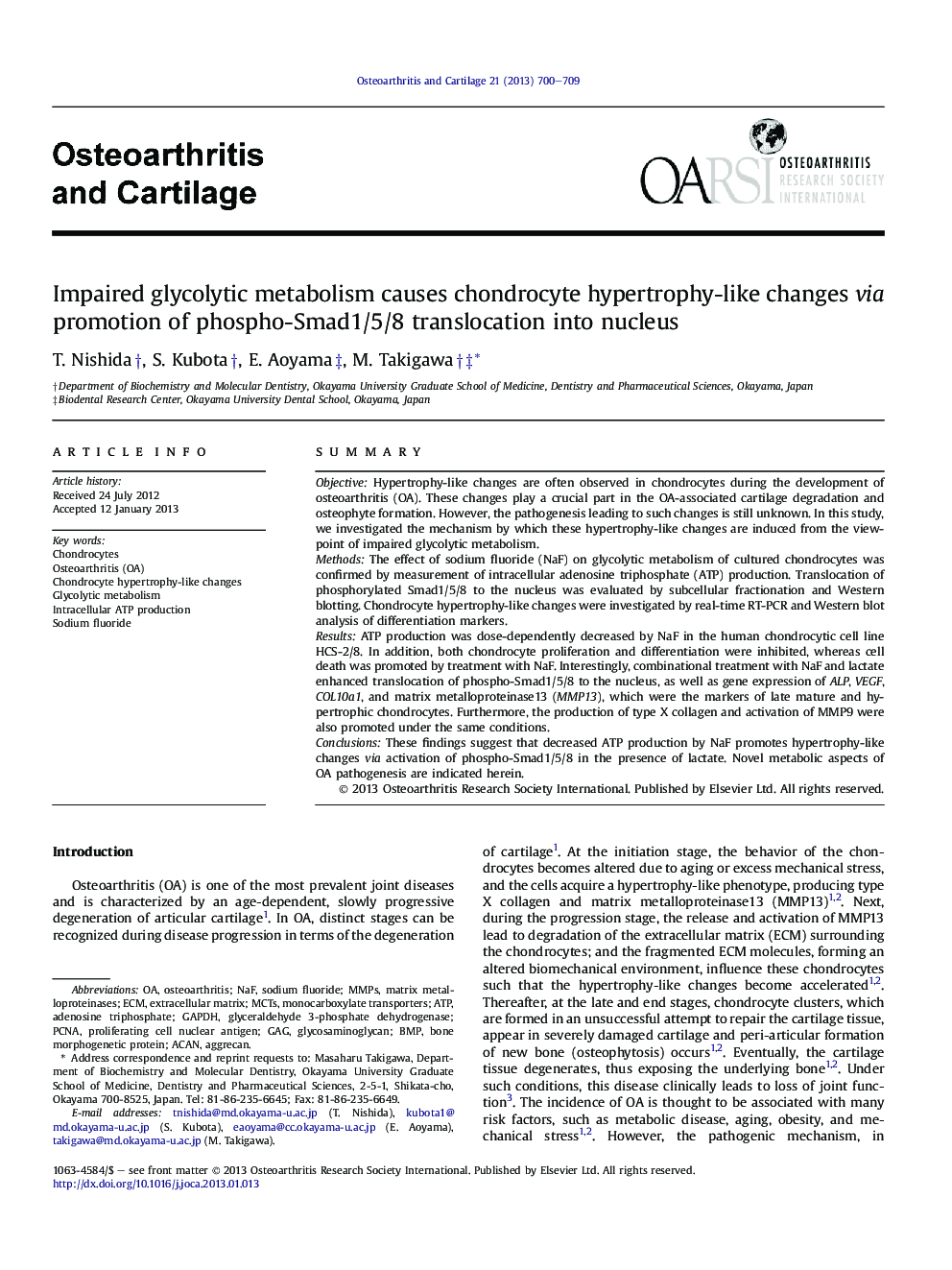| Article ID | Journal | Published Year | Pages | File Type |
|---|---|---|---|---|
| 3379734 | Osteoarthritis and Cartilage | 2013 | 10 Pages |
SummaryObjectiveHypertrophy-like changes are often observed in chondrocytes during the development of osteoarthritis (OA). These changes play a crucial part in the OA-associated cartilage degradation and osteophyte formation. However, the pathogenesis leading to such changes is still unknown. In this study, we investigated the mechanism by which these hypertrophy-like changes are induced from the viewpoint of impaired glycolytic metabolism.MethodsThe effect of sodium fluoride (NaF) on glycolytic metabolism of cultured chondrocytes was confirmed by measurement of intracellular adenosine triphosphate (ATP) production. Translocation of phosphorylated Smad1/5/8 to the nucleus was evaluated by subcellular fractionation and Western blotting. Chondrocyte hypertrophy-like changes were investigated by real-time RT-PCR and Western blot analysis of differentiation markers.ResultsATP production was dose-dependently decreased by NaF in the human chondrocytic cell line HCS-2/8. In addition, both chondrocyte proliferation and differentiation were inhibited, whereas cell death was promoted by treatment with NaF. Interestingly, combinational treatment with NaF and lactate enhanced translocation of phospho-Smad1/5/8 to the nucleus, as well as gene expression of ALP, VEGF, COL10a1, and matrix metalloproteinase13 (MMP13), which were the markers of late mature and hypertrophic chondrocytes. Furthermore, the production of type X collagen and activation of MMP9 were also promoted under the same conditions.ConclusionsThese findings suggest that decreased ATP production by NaF promotes hypertrophy-like changes via activation of phospho-Smad1/5/8 in the presence of lactate. Novel metabolic aspects of OA pathogenesis are indicated herein.
